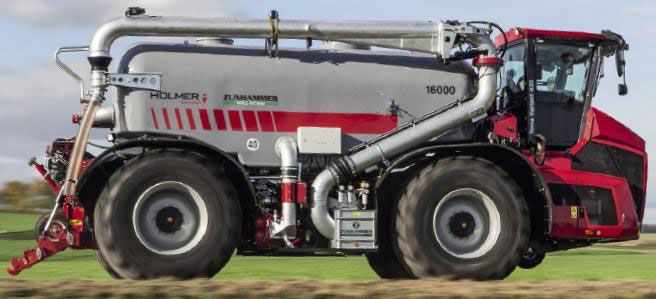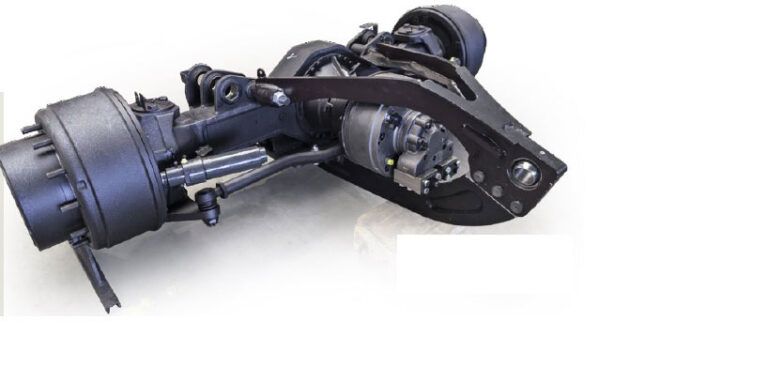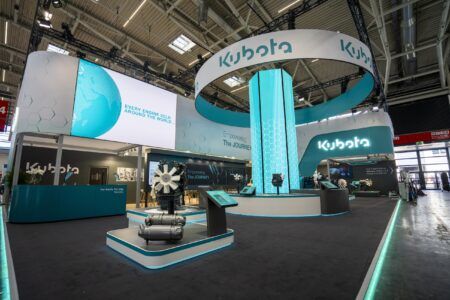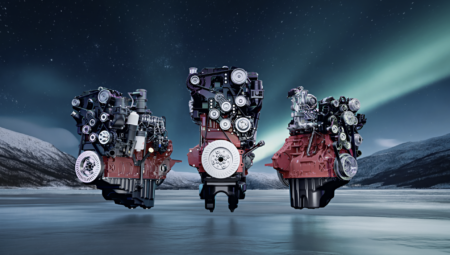SAI’s latest variable displacement technology is helping to revolutionize the design of hydrostatic transmission systems, optimizing performance, weight, noise and overall efficiency.
In all mobile machinery, energy must be transferred from the prime mover (usually a diesel engine) to the end users – either the wheels to drive the machine or the tools and equipment installed.
When using a hydrostatic transmission, the operational performance maximum tractive effort (torque) and travel speed of the machine is defined by the pump, the motor and the mechanical setup.
Hydraulic energy conversion is defined by three key factors. First, the theoretical range – the ratio between the maximum tractive effort (torque) and the maximum travel speed – which is defined by the performance requirements of the vehicle or tool. Second, the efficiency of this conversion in all the ranges of torque and speed needed. And finally, the transmission layout and characteristics.
Effects of a variable displacement motor
A variable displacement motor can have major effects on the performance of a hydrostatic transmission. For example, it can enable complete control of the motor speed and torque.
The machinery’s theoretical performance is related to the ratio between the maximum and minimum displacement of the hydraulic motor. Variable axial piston motors are commonly used in minimum displacement between 35% (swash plate) and 25% (bent axis) of the maximum displacement. Below these values, the motor efficiency and controllability are severely compromised.
Therefore, where the application’s theoretical range is wide, the traditional transmission setup requires a variable displacement axial piston motor, plus a mechanical multispeed gear reduction (different gear ratio and/or clutches) to cover the whole range.
The SAI variable displacement radial piston motor can transition seamlessly from maximum to minimum displacement, for complete motor speed and torque control. The motor can be used with a minimum displacement 10% of the maximum displacement, while still offering high efficiency and controllability.
This offers the capacity to cover the full required range of the machine simply by adjusting the pump output flow and the SAI variable displacement motor, without adding gear switches, clutches, or any other form of mechanical transmission.
High accuracy, low emissions
The SAI variable displacement motor provides high levels of efficiency, from creep speed in maximum displacement, to top speed in minimum displacement. This innovative solution is favored over the traditional gearbox/motor combination as the efficiency of the drive is greatly increased by decreasing the gearbox reduction ratio.
The SAI motor gives direct access to the machine’s whole operational range. The efficiencies achieved result in reduced fuel consumption and power losses – a critical factor for meeting stricter emissions regulations.
The high efficiency throughout the entire displacement variation range results in very accurate power delivery, from very low-speed positioning to very high-speed travel.
Gearbox-free transmission
SAI components allow the designing of a transmission without gearboxes and clutches, therefore saving space and weight, and increasing robustness.
Removing the mechanical gear selection, clutches and reduction gearboxes has many benefits, including the removal of high-wearing components that are costly to maintain, and are prone to failure. There are also gains in efficiency, usability and noise.
SAI’s solutions maximize all the key requirements of a hydrostatic transmission, improving efficiency while optimizing the performance, weight, maintenance and noise of the machinery.
The benefit of this breakthrough technology has been proven in mobile vehicles, drilling machinery, marine and industrial applications.






